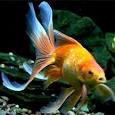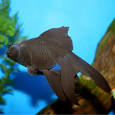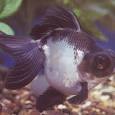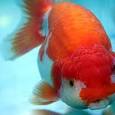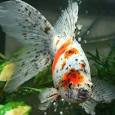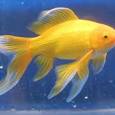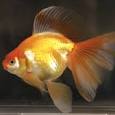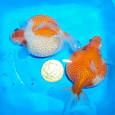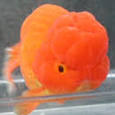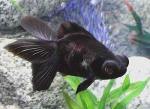The three categories of filtration
There are three types of filtration that are necessary for the health of any aquarium:
- Mechanical
- Chemical
- Biological
Before choosing a filtration system, it is important to understand all three, and how they will benefit your aquarium.
Mechanical
Mechanical filtration is the process in which particulate matter is removed from the water. To accomplish this, the aquarium water is forced through a media (material) that is designed to catch and hold these tiny particles. This media is available in many forms including different types of foam, filter floss, pads, micron paper pleats, and diatomaceous earth. To function properly, it is important that this media is cleaned regularly to remove the particulate matter it has trapped, prior to the material decaying and adding to the waste products in the aquarium.
It is a common misconception with many aquarists that by oversizing the mechanical filter, more fish can be kept in the system, and the filter will require less maintenance. All mechanical filters over time will become clogged with particulate matter. When this occurs, it will cause the water flow to either decrease, or flow around the material instead of through it. At that point, the hobbyist should recognize the need to clean the filter. By oversizing the mechanical filter, it may be months before the filter loses its efficiency, which means that it will be months between cleanings. Even though the aquarium may look clean and free of particulate matter, the filter will be holding large amounts of detritus (tiny pieces of decomposing plant or animal material) and other debris that is slowly decaying and contaminating the water with toxic breakdown products such as ammonia, nitrites, and ultimately nitrates. These waste products, therefore, actually reduce the number of aquarium inhabitants that can be housed safely.
Chemical
Chemical filtration removes toxic or unwanted chemicals as the water passes through a chemical media or resin. There have been a number of advancements in the past years, giving us new products that are targeted at removing specific chemicals or excess nutrients from the water. If used correctly, these medias can be incorporated into the filtration to both improve water quality, and reduce the amount of maintenance and water changes needed to sustain a healthy aquarium. However, it is important to carefully monitor the water chemistry and perform water changes as necessary.
Biological
In biological filtration, different types of bacteria convert the toxic chemical byproducts produced by the aquarium inhabitants into less toxic nutrients. This breakdown process by the bacteria is called the Nitrogen Cycle.
 In the Nitrogen Cycle, the waste products of the fish, plants, and invertebrates, along with any dead organisms or uneaten food, are broken down by bacteria and fungi into ammonia. Ammonia is extremely toxic to all of the aquarium inhabitants, and is broken down into nitrites by an oxygen-loving bacteria known as Nitrosomonas. Although nitrites are not as toxic as ammonia, even at low concentrations in the aquarium, they can still be harmful to fish and invertebrates. Again, another bacteria called Nitrobacter, which also utilizes oxygen, acts in a similar way as Nitrosomonas, and essentially changes nitrites into relatively harmless nitrates. Nitrates, at low to moderate levels, will not harm most fish or invertebrates, but can be the source of some unsightly algae problems if not controlled by both the chemical filtration and water changes.
In the Nitrogen Cycle, the waste products of the fish, plants, and invertebrates, along with any dead organisms or uneaten food, are broken down by bacteria and fungi into ammonia. Ammonia is extremely toxic to all of the aquarium inhabitants, and is broken down into nitrites by an oxygen-loving bacteria known as Nitrosomonas. Although nitrites are not as toxic as ammonia, even at low concentrations in the aquarium, they can still be harmful to fish and invertebrates. Again, another bacteria called Nitrobacter, which also utilizes oxygen, acts in a similar way as Nitrosomonas, and essentially changes nitrites into relatively harmless nitrates. Nitrates, at low to moderate levels, will not harm most fish or invertebrates, but can be the source of some unsightly algae problems if not controlled by both the chemical filtration and water changes.
For the Nitrogen Cycle to work properly, there must be an area for a sufficient number of these bacteria to grow, and their need for oxygen must be met. Biological filtration occurs to some degree in all filters and in areas of the aquarium where these bacteria are present such as the water,substrate, and decorations. The capacity of a biological filter is determined by the available surface area for bacterial growth and the oxygen content of the water passing over them. Not all filters have the same capacity when it comes to biological filtration. Filters in which the biological media is exposed to the air are going to have the greatest capacity.
Types of filters
There are many types of filters currently on the market that range in size, price, and their ability to perform the three essential types of filtration. These filters include:
- Internal
- Under Gravel
- Power
- Canister
- Wet/dry
It is important to know what type of livestock you plan to keep before choosing a filter for your system. Some aquariums, such as a live planted freshwater aquarium, do not require a filter that is efficient biologically, but do require a filter that is efficient in both chemical and mechanical filtration. On the other hand, an unplanted, heavily-stocked African Cichlid aquarium is going to require a filter, or combination of filters, that is efficient in all three types of filtration. In the next section of this article, the different filters that are available, their ability to perform the three types of filtration, their price range, and the amount of time needed to maintain them will be explained. A table at the end of the article summarizes this information.
Internal Filters
Internal filters come in many different styles, and are simply placed in the aquarium either on the substrate, or mounted to one of the sides with suction cups. They include corner box filters and sponge models. For most internal filters, an airline needs to be attached to the inlet of the filter, and is driven by an air pump located outside the aquarium. Air is pumped into the bottom of the filter, moves through the filter, and is then released through the top of the filter where it dissipates to the surface of the water. The action of the air bubbles creates water movement through the filter which enables it to perform the filtration.
 Corner Box Filters: The corner box filter is typically shaped to fit into the corner of the aquarium. It is simply a box with slots in the top and bottom which allow water to flow through it. Placed on the gravel, the air is pumped into the bottom of the filter from a remote air pump. The air draws the water through the filter from the bottom and leaves the filter at the top.
Corner Box Filters: The corner box filter is typically shaped to fit into the corner of the aquarium. It is simply a box with slots in the top and bottom which allow water to flow through it. Placed on the gravel, the air is pumped into the bottom of the filter from a remote air pump. The air draws the water through the filter from the bottom and leaves the filter at the top.
The corner box filter is designed to perform all three types of filtration, but the efficiency of all types are limited due to the lower oxygen content and the lower level of water flow. Layers of floss for mechanical filtration and activated carbon for chemical filtration are the typical medias used in this type of filter, although it can be customized with any type of mechanical or chemical materials. Bacteria growing on the filter media provide the biological filtration.
This filter should be cleaned/changed regularly depending on the aquarium load, and care should be taken not to destroy the beneficial bacteria located in the mechanical filtration media. This can be accomplished by rinsing the media in the aquarium water that is removed during a routine water change, rather than in tap water. Only replacing half of that media at a time will preserve the bacteria needed for the biological filtration.
 Sponge Models: The sponge filter features a design in which a u-shaped tube is used to pull water through a sponge-like material that features a very large surface area. A separate air pump is needed to provide the air flow.
Sponge Models: The sponge filter features a design in which a u-shaped tube is used to pull water through a sponge-like material that features a very large surface area. A separate air pump is needed to provide the air flow.
The sponge material is capable of both mechanical and biological filtration. Mechanical filtration occurs as the sponge traps particulate matter suspended in the water that is passing through it. Biological filtration is provided by the beneficial bacteria living on the sponge. Its mechanical and biological effectiveness is limited, due to the lower amount of oxygen and volume of water drawn through the filter.
This type of filtration is very inexpensive and is easy to maintain. To remove the organic matter before it begins to deteriorate, every week the sponge filter should be rinsed in water removed from the aquarium. Using aquarium water is important when cleaning these filters so you do not risk killing the beneficial bacteria that are responsible for the biological filtration.
Both types of internal filters have limited use, only being effective in small aquariums with a small number of inhabitants. Typical uses for these filters are in breeding and hospital tanks. Because there are no moving parts in the aquarium when using this style of filter, small newly hatched or reared fry cannot be drawn into the filter, which results in lower mortality rates. For the hospital tank, the sponge or floss material can be set into the main aquarium for a few days to become colonized with beneficial bacteria prior to being put to use in the hospital tank. At that time, the sick fish can be acclimated into the hospital tank for treatment without having to cycle the aquarium, avoiding additional stress on the ill fish. Again, these filters are very inexpensive and are easy to maintain, but have limited applications.
Under Gravel Filters
 An under gravel filter employs a slotted plate that is installed underneath the substrate (e.g.; gravel) and has multiple tubes, called uplift tubes, that extend upward toward the surface of the water. Either an air stone is installed inside the uplift tubes, or a power head is placed on top of the tube, to draw water through the substrate and up through the tubes.
An under gravel filter employs a slotted plate that is installed underneath the substrate (e.g.; gravel) and has multiple tubes, called uplift tubes, that extend upward toward the surface of the water. Either an air stone is installed inside the uplift tubes, or a power head is placed on top of the tube, to draw water through the substrate and up through the tubes.
The mechanical filtration is achieved as the water flows through the substrate, which traps any particulate matter. It is very important that a gravel cleaner is used on this type of set-up weekly to remove the particulate matter before it starts to decay and becomes a part of the biological load.
The biological filtration is accomplished by the bacteria living on the large surface area of the substrate that the water is passing through. The biological filtration, however, is limited due to the lower oxygen content of the water passing through the substrate. Another downfall to the biological filtration with this type of filter is that the water does not flow evenly through the substrate due to different substrate depths and decorations placed on the substrate. This creates dead spots within the filter bed. Detritus builds up in these dead spots and can cause pockets of dangerous levels of hydrogen sulfide. Again, it is important to regularly agitate and clean the substrate when using this type of filtration. Some models of under gravel filters have carbon cartridges to provide chemical filtration.
Aquariums utilizing under gravel filters tend to run higher nitrate and phosphate levels if not maintained properly. Again, weekly gravel cleanings along with water changes are needed to maintain a healthy system when using these filters. These filters are typically in the low to medium price range depending on whether air stones or power heads are employed. They can be used on various aquarium set-ups, but the amount of livestock that can be maintained will be limited. The under gravel filters are not recommended for freshwater planted aquariums since plant roots may grow into the under gravel filter and obstruct water flow.
Power Filters
 “Power filters” is the term used to describe the vast array of filters available on the market that are designed to hang on the back of the aquarium. Most of these filters employ all three types of filtration and are very easy to maintain. These units also include the pump necessary to draw the water into the filter and are completely self-contained. The aquarium water is pulled into the filter using a u-tube and flows through a cartridge or other type of filter media. Most models require filter cartridges, usually containing activated carbon, which are designed for the specific model of filter.
“Power filters” is the term used to describe the vast array of filters available on the market that are designed to hang on the back of the aquarium. Most of these filters employ all three types of filtration and are very easy to maintain. These units also include the pump necessary to draw the water into the filter and are completely self-contained. The aquarium water is pulled into the filter using a u-tube and flows through a cartridge or other type of filter media. Most models require filter cartridges, usually containing activated carbon, which are designed for the specific model of filter.
The mechanical filtration of the power filter is accomplished as the aquarium water passes through a floss or foam material, and is moderately efficient. A weakness in the mechanical filtration of most power filters is that the cartridges tend to clog relatively quickly causing the water to pass over the cartridge instead of passing through it. It is important to remove the media regularly and rinse the debris from the material. The frequency of cleaning and replacing the cartridges is going to depend on the biological load of the system.
The chemical filtration is typically integrated into the filter cartridge that usually contains activated carbon. Some models include chambers in which more specialized chemical medias and resins can be added. The efficiency of the chemical filtration is similar to the efficiency of the mechanical filtration and is going to depend on the percent of the water passing through the cartridge. Again, the bio load of the system is going to dictate how often the cartridge and media need to be replaced.
Biological filtration also occurs within the filter cartridge. The mechanical and chemical sections of the filter harbor large numbers of beneficial bacteria that aid in the nitrogen cycle. The efficiency of the biological filtration within the cartridge is limited due to the moderate amount of oxygen present in the water passing through the media. The downside to these cartridges is that when they need to be replaced, you lose the entire bacterial bed when changing the seasoned cartridge with a new one. Before replacing the old cartridge, it is a good idea to place the new cartridge in a spot either in the aquarium or the filter to allow the beneficial bacteria to grow prior to removing the old one.
Many power filters also come with biowheels. Biowheels are a biological filter that incorporate a wheel with pleats for surface area, that spins as the water passes over it. A biowheel provides excellent biological filtration thanks to the amount of air contact the water receives as the wheel spins. These wheels require very little maintenance, and they should only be rinsed periodically in water taken from the aquarium to remove any buildup.
Because of the low to medium price and ease of maintenance, power filters are often the perfect filtration for the beginner hobbyist. Power filters are not well-suited for either freshwater planted or saltwater aquariums. Ideally, the water surface of a freshwater planted aquarium should remain undisturbed so the concentrations of carbon dioxide in the water can be maintained. All of the power filters disrupt the surface of the water, making them a less-than-ideal choice for a planted aquarium with a carbon dioxide injection system. The downside of using a power filter on a saltwater aquarium is again, due to the fact that these filters agitate the surface of the water resulting in a large amount of salt creep both on the hood and the lighting system. They can still be used on a saltwater aquarium, but be prepared for the extra maintenance and potential damage that the encrusting salt will cause.
Canister Filters
 Canister filters are pressurized units that are typically placed beneath the aquarium and perform all three types of filtration. They are available either in a complete unit which includes its own pump, or in a modular form that requires an additional pump. The modular units are useful when plumbed in-line with other types of filtration, such as a wet/dry filter. The complete units use a u-tube as the water intake and typically a spray bar for the water return. Once the system is installed on the aquarium, a siphon is started allowing the water to flow from the aquarium down to the canister filter. The water entering the filter will first pass through a mechanical media such as floss or pads and will then be forced through the chemical media. After the chemical filtration is complete, the water then enters the last chamber containing the biological media where the nitrogen cycle is completed prior to the water returning to the aquarium.
Canister filters are pressurized units that are typically placed beneath the aquarium and perform all three types of filtration. They are available either in a complete unit which includes its own pump, or in a modular form that requires an additional pump. The modular units are useful when plumbed in-line with other types of filtration, such as a wet/dry filter. The complete units use a u-tube as the water intake and typically a spray bar for the water return. Once the system is installed on the aquarium, a siphon is started allowing the water to flow from the aquarium down to the canister filter. The water entering the filter will first pass through a mechanical media such as floss or pads and will then be forced through the chemical media. After the chemical filtration is complete, the water then enters the last chamber containing the biological media where the nitrogen cycle is completed prior to the water returning to the aquarium.
The mechanical filtration of canister filters is far superior to any other type of filter. This is due to the fact that the canister filter is pressurized and the water can be forced through a finer material that can trap smaller particulate matter. These materials, or cartridges in some cases, have a rating that indicates the size of particles that the filter will trap. This rating is measured in microns. The lower the micron value, the smaller the particle of matter that can be removed by the filter.
The chemical filtration of canister filters is going to be the most efficient compared to other filters available. Again, this is because the water is pressurized and is forced through the media. Another advantage of the canister filters is the flexibility of the types of chemical filtration medias that can be added. Activated carbon is the suggested media to use in general maintenance, but there are more specialized medias and resins that can be incorporated when needed. These resins have been developed to remove a wide range of chemicals and excess nutrients from the system, and can be used both in emergency and on a regular basis to reduce the amount of maintenance that the system requires.
 The biological filtration of canister filters is limited due to the amount of oxygen present in the water passing through the filter. Because they are pressurized filters, there is no water-to-air contact within the biological media. This means that this aspect of filtration will not be as efficient as other types of filters available. There are many types of medias available that can be used in a canister filter for biological filtration. These medias include engineered glass medias, ceramic rings, and porous gravel-like materials. There are canister filters available that include a bio-wheel on the return into the aquarium. The biowheel makes up for the limited biological filtration that occurs in the canister itself, since there is excellent water to air contact time within the biowheel.
The biological filtration of canister filters is limited due to the amount of oxygen present in the water passing through the filter. Because they are pressurized filters, there is no water-to-air contact within the biological media. This means that this aspect of filtration will not be as efficient as other types of filters available. There are many types of medias available that can be used in a canister filter for biological filtration. These medias include engineered glass medias, ceramic rings, and porous gravel-like materials. There are canister filters available that include a bio-wheel on the return into the aquarium. The biowheel makes up for the limited biological filtration that occurs in the canister itself, since there is excellent water to air contact time within the biowheel.
Canister filters are in the medium price range and require a moderate level of maintenance. The strengths of these filters make them a good choice for almost any type of set-up. The canister filter, without the biowheel, is the ideal filtration for freshwater planted aquariums. Because you want to increase the amount of carbon dioxide in a freshwater planted aquarium, it requires filtration that employs a low water to air contact time. The fact that these filters are pressurized, and the return line can be placed under the water surface in the aquarium, the water surface will not be disturbed, making them the perfect choice for this type of set-up. Canister filters, when used in conjunction with an additional biological filter, are an excellent choice for saltwater fish and reef aquariums. The advantage that these filters have in a saltwater aquarium is their ability to be customized. When combined with an efficient biological filter, the canister filter can be used strictly for mechanical or chemical filtration, or a combination of both. In any type of set-up, it is important that the mechanical filtration section of these filters be cleaned on a regular basis to keep the level of nitrates down. The frequency of cleaning will depend on the stocking level of the aquarium, but should never exceed 4 weeks.
Wet/Dry Filters
 Wet/dry filters are typically located beneath the aquarium and use an overflow device to regulate the amount of water supplied to the filter. The overflow device incorporates two boxes, one inside, and one outside the aquarium, usually in the back. A u-tube is used to move the water, via a siphon, from the box inside the aquarium to the one on the back of the aquarium. The overflow box that is located inside the aquarium can be raised or lowered, which will alter the water level in the aquarium. After flowing into the box on the back of the aquarium, the water flows through a pre-filter material (usually a sponge), which traps any large particulate matter prior to entering the main filter housed below the aquarium. As the water drops to the filter, it is agitated causing the water to mix with air. The aquarium water is then dispersed over the biological media chamber via a drip plate or spray bar. After the water passes through the biological media, it flows through the bottom of that chamber into the other part of the filter, which is often referred to as the sump. In this open area of the filter, a protein skimmer, chemical medias, denitrator, or calcium reactor can be incorporated. The water pump responsible for returning the water into the aquarium is also located in the sump. The water pump is installed using either a bulkhead for in-line operation, or a submersible pump can be located directly in the sump.
Wet/dry filters are typically located beneath the aquarium and use an overflow device to regulate the amount of water supplied to the filter. The overflow device incorporates two boxes, one inside, and one outside the aquarium, usually in the back. A u-tube is used to move the water, via a siphon, from the box inside the aquarium to the one on the back of the aquarium. The overflow box that is located inside the aquarium can be raised or lowered, which will alter the water level in the aquarium. After flowing into the box on the back of the aquarium, the water flows through a pre-filter material (usually a sponge), which traps any large particulate matter prior to entering the main filter housed below the aquarium. As the water drops to the filter, it is agitated causing the water to mix with air. The aquarium water is then dispersed over the biological media chamber via a drip plate or spray bar. After the water passes through the biological media, it flows through the bottom of that chamber into the other part of the filter, which is often referred to as the sump. In this open area of the filter, a protein skimmer, chemical medias, denitrator, or calcium reactor can be incorporated. The water pump responsible for returning the water into the aquarium is also located in the sump. The water pump is installed using either a bulkhead for in-line operation, or a submersible pump can be located directly in the sump.
The mechanical filtration of the wet/dry filter is accomplished by both the pre-filter material, and the media that is located between the biological filter and the sump section. Because of the design of wet/dry filters, the water flow can not be restricted, so the sponges are large-pored allowing water to pass through easily. This means that the mechanical filtration is limited to removing only the larger particulate matter, and is not very efficient.
The chemical filtration is accomplished by placing a chemical media in the filter, typically in an area before the sump section of the filter. Because the water merely flows through, and is not forced through the media, the chemical filtration of these filters is not very efficient.
The biological filtration of wet/dry filters is far superior to the other filters described thus far, for several reasons. First, the amount of surface area within the biological media provides space for the beneficial bacteria to colonize in large numbers. Secondly, not only is the oxygen content of the water very high, the media is also directly exposed to the air which allows the bacteria to be exposed to even higher amounts of oxygen. There are many types of biological medias that can be used in wet/dry filters, ranging from engineered glass and plastic products, to the use of live rock in this chamber. Again, when choosing a media for a wet/dry filter, look at the biological load that you plan on placing on the system and compare that to the available surface area of the media.
 Wet/dry filters are in the high price range and require a low amount of maintenance. Because of their biological filtration capabilities, these filters have been tailored for use in most commercial applications, and are ideal for heavily-stocked fresh and saltwater aquariums. These filters are, however, not suited for a freshwater planted aquarium due to the amount of water to air contact. Again, this contact will allow most of the carbon dioxide needed by the plants to escape into the air. Although they are not very efficient mechanically or chemically, an inline canister filter can be easily added to the return line, making up for these weaknesses. The maintenance of a wet/dry filter involves weekly rinsing of the pre-filter, and the sponge located in the sump. Regular additions of fresh water need to be made to compensate for the water that has evaporated from the system. Because of the design of the overflow boxes, the water level changes in the sump, not the aquarium. It is important to monitor the water level in the sump area and not allow the pump to run dry, which may damage the pump.
Wet/dry filters are in the high price range and require a low amount of maintenance. Because of their biological filtration capabilities, these filters have been tailored for use in most commercial applications, and are ideal for heavily-stocked fresh and saltwater aquariums. These filters are, however, not suited for a freshwater planted aquarium due to the amount of water to air contact. Again, this contact will allow most of the carbon dioxide needed by the plants to escape into the air. Although they are not very efficient mechanically or chemically, an inline canister filter can be easily added to the return line, making up for these weaknesses. The maintenance of a wet/dry filter involves weekly rinsing of the pre-filter, and the sponge located in the sump. Regular additions of fresh water need to be made to compensate for the water that has evaporated from the system. Because of the design of the overflow boxes, the water level changes in the sump, not the aquarium. It is important to monitor the water level in the sump area and not allow the pump to run dry, which may damage the pump.
By: http://www.peteducation.com/






 In the Nitrogen Cycle, the waste products of the fish, plants, and invertebrates, along with any dead organisms or uneaten food, are broken down by bacteria and fungi into ammonia. Ammonia is extremely toxic to all of the aquarium inhabitants, and is broken down into nitrites by an oxygen-loving bacteria known as Nitrosomonas. Although nitrites are not as toxic as ammonia, even at low concentrations in the aquarium, they can still be harmful to fish and invertebrates. Again, another bacteria called Nitrobacter, which also utilizes oxygen, acts in a similar way as Nitrosomonas, and essentially changes nitrites into relatively harmless nitrates. Nitrates, at low to moderate levels, will not harm most fish or invertebrates, but can be the source of some unsightly algae problems if not controlled by both the chemical filtration and water changes.
In the Nitrogen Cycle, the waste products of the fish, plants, and invertebrates, along with any dead organisms or uneaten food, are broken down by bacteria and fungi into ammonia. Ammonia is extremely toxic to all of the aquarium inhabitants, and is broken down into nitrites by an oxygen-loving bacteria known as Nitrosomonas. Although nitrites are not as toxic as ammonia, even at low concentrations in the aquarium, they can still be harmful to fish and invertebrates. Again, another bacteria called Nitrobacter, which also utilizes oxygen, acts in a similar way as Nitrosomonas, and essentially changes nitrites into relatively harmless nitrates. Nitrates, at low to moderate levels, will not harm most fish or invertebrates, but can be the source of some unsightly algae problems if not controlled by both the chemical filtration and water changes.
 An under gravel filter employs a slotted plate that is installed underneath the substrate (e.g.; gravel) and has multiple tubes, called uplift tubes, that extend upward toward the surface of the water. Either an air stone is installed inside the uplift tubes, or a power head is placed on top of the tube, to draw water through the substrate and up through the tubes.
An under gravel filter employs a slotted plate that is installed underneath the substrate (e.g.; gravel) and has multiple tubes, called uplift tubes, that extend upward toward the surface of the water. Either an air stone is installed inside the uplift tubes, or a power head is placed on top of the tube, to draw water through the substrate and up through the tubes. “Power filters” is the term used to describe the vast array of filters available on the market that are designed to hang on the back of the aquarium. Most of these filters employ all three types of filtration and are very easy to maintain. These units also include the pump necessary to draw the water into the filter and are completely self-contained. The aquarium water is pulled into the filter using a u-tube and flows through a cartridge or other type of filter media. Most models require filter cartridges, usually containing activated carbon, which are designed for the specific model of filter.
“Power filters” is the term used to describe the vast array of filters available on the market that are designed to hang on the back of the aquarium. Most of these filters employ all three types of filtration and are very easy to maintain. These units also include the pump necessary to draw the water into the filter and are completely self-contained. The aquarium water is pulled into the filter using a u-tube and flows through a cartridge or other type of filter media. Most models require filter cartridges, usually containing activated carbon, which are designed for the specific model of filter. The biological filtration of canister filters is limited due to the amount of oxygen present in the water passing through the filter. Because they are pressurized filters, there is no water-to-air contact within the biological media. This means that this aspect of filtration will not be as efficient as other types of filters available. There are many types of medias available that can be used in a canister filter for biological filtration. These medias include engineered glass medias, ceramic rings, and porous gravel-like materials. There are canister filters available that include a bio-wheel on the return into the aquarium. The biowheel makes up for the limited biological filtration that occurs in the canister itself, since there is excellent water to air contact time within the biowheel.
The biological filtration of canister filters is limited due to the amount of oxygen present in the water passing through the filter. Because they are pressurized filters, there is no water-to-air contact within the biological media. This means that this aspect of filtration will not be as efficient as other types of filters available. There are many types of medias available that can be used in a canister filter for biological filtration. These medias include engineered glass medias, ceramic rings, and porous gravel-like materials. There are canister filters available that include a bio-wheel on the return into the aquarium. The biowheel makes up for the limited biological filtration that occurs in the canister itself, since there is excellent water to air contact time within the biowheel. Wet/dry filters are typically located beneath the aquarium and use an overflow device to regulate the amount of water supplied to the filter. The overflow device incorporates two boxes, one inside, and one outside the aquarium, usually in the back. A u-tube is used to move the water, via a siphon, from the box inside the aquarium to the one on the back of the aquarium. The overflow box that is located inside the aquarium can be raised or lowered, which will alter the water level in the aquarium. After flowing into the box on the back of the aquarium, the water flows through a pre-filter material (usually a sponge), which traps any large particulate matter prior to entering the main filter housed below the aquarium. As the water drops to the filter, it is agitated causing the water to mix with air. The aquarium water is then dispersed over the biological media chamber via a drip plate or spray bar. After the water passes through the biological media, it flows through the bottom of that chamber into the other part of the filter, which is often referred to as the sump. In this open area of the filter, a protein skimmer, chemical medias, denitrator, or calcium reactor can be incorporated. The water pump responsible for returning the water into the aquarium is also located in the sump. The water pump is installed using either a bulkhead for in-line operation, or a submersible pump can be located directly in the sump.
Wet/dry filters are typically located beneath the aquarium and use an overflow device to regulate the amount of water supplied to the filter. The overflow device incorporates two boxes, one inside, and one outside the aquarium, usually in the back. A u-tube is used to move the water, via a siphon, from the box inside the aquarium to the one on the back of the aquarium. The overflow box that is located inside the aquarium can be raised or lowered, which will alter the water level in the aquarium. After flowing into the box on the back of the aquarium, the water flows through a pre-filter material (usually a sponge), which traps any large particulate matter prior to entering the main filter housed below the aquarium. As the water drops to the filter, it is agitated causing the water to mix with air. The aquarium water is then dispersed over the biological media chamber via a drip plate or spray bar. After the water passes through the biological media, it flows through the bottom of that chamber into the other part of the filter, which is often referred to as the sump. In this open area of the filter, a protein skimmer, chemical medias, denitrator, or calcium reactor can be incorporated. The water pump responsible for returning the water into the aquarium is also located in the sump. The water pump is installed using either a bulkhead for in-line operation, or a submersible pump can be located directly in the sump. Wet/dry filters are in the high price range and require a low amount of maintenance. Because of their biological filtration capabilities, these filters have been tailored for use in most commercial applications, and are ideal for heavily-stocked fresh and saltwater aquariums. These filters are, however, not suited for a freshwater planted aquarium due to the amount of water to air contact. Again, this contact will allow most of the carbon dioxide needed by the plants to escape into the air. Although they are not very efficient mechanically or chemically, an inline canister filter can be easily added to the return line, making up for these weaknesses. The maintenance of a wet/dry filter involves weekly rinsing of the pre-filter, and the sponge located in the sump. Regular additions of fresh water need to be made to compensate for the water that has evaporated from the system. Because of the design of the overflow boxes, the water level changes in the sump, not the aquarium. It is important to monitor the water level in the sump area and not allow the pump to run dry, which may damage the pump.
Wet/dry filters are in the high price range and require a low amount of maintenance. Because of their biological filtration capabilities, these filters have been tailored for use in most commercial applications, and are ideal for heavily-stocked fresh and saltwater aquariums. These filters are, however, not suited for a freshwater planted aquarium due to the amount of water to air contact. Again, this contact will allow most of the carbon dioxide needed by the plants to escape into the air. Although they are not very efficient mechanically or chemically, an inline canister filter can be easily added to the return line, making up for these weaknesses. The maintenance of a wet/dry filter involves weekly rinsing of the pre-filter, and the sponge located in the sump. Regular additions of fresh water need to be made to compensate for the water that has evaporated from the system. Because of the design of the overflow boxes, the water level changes in the sump, not the aquarium. It is important to monitor the water level in the sump area and not allow the pump to run dry, which may damage the pump.